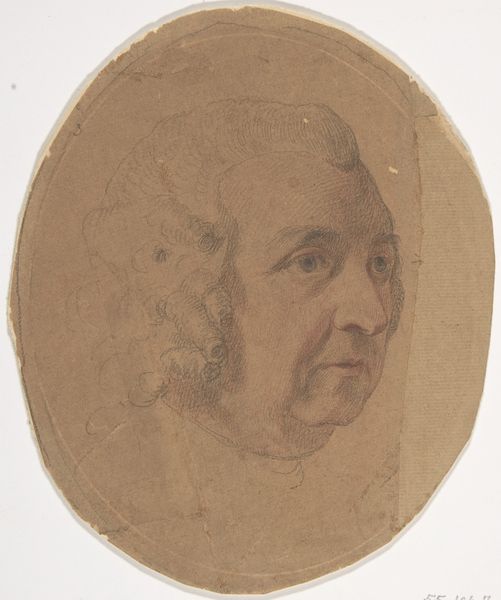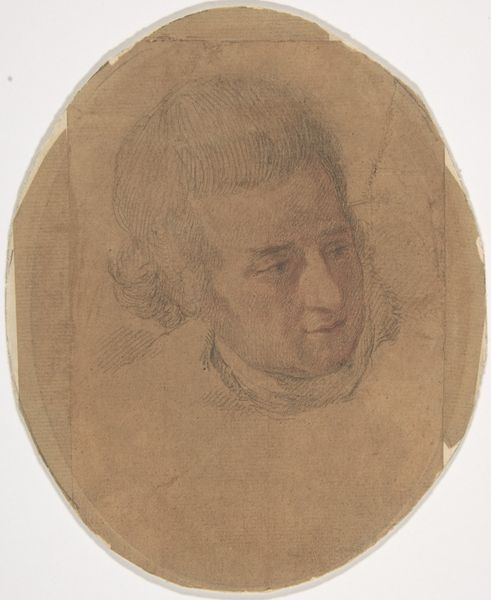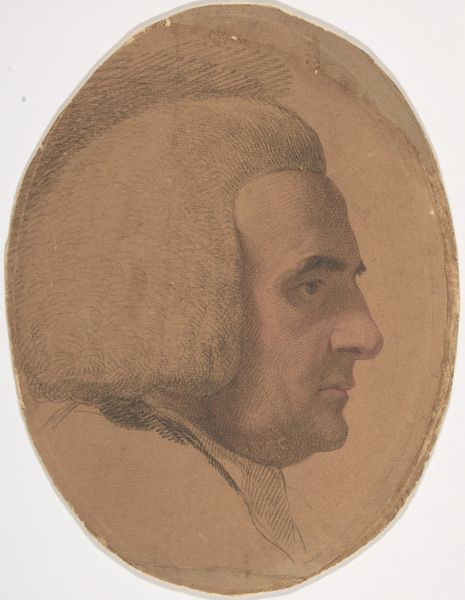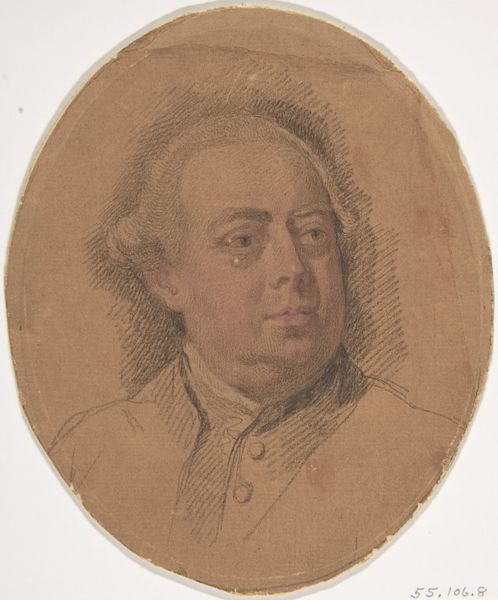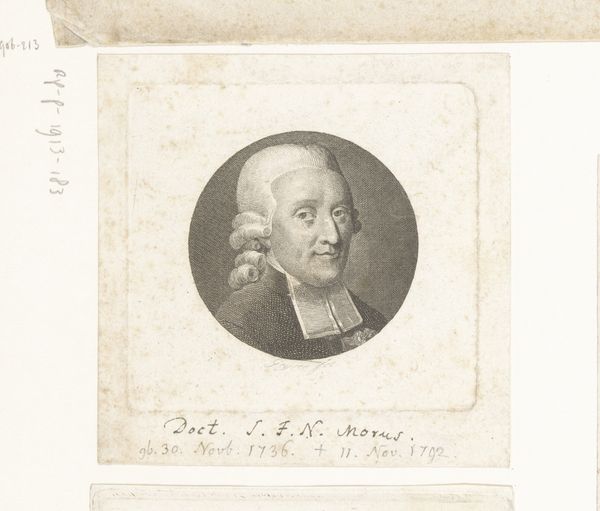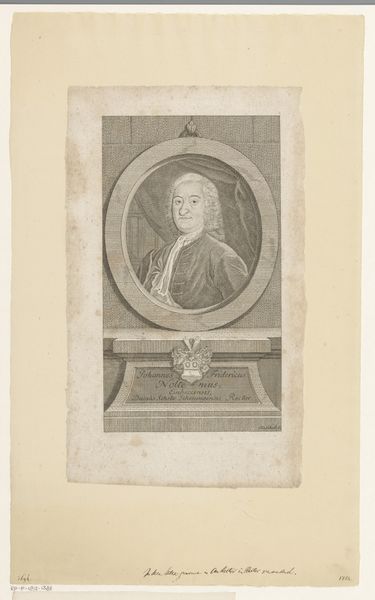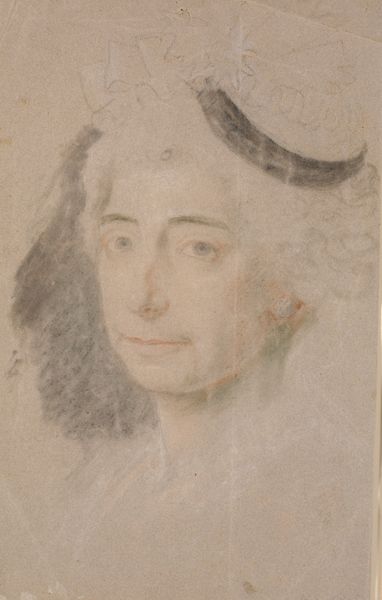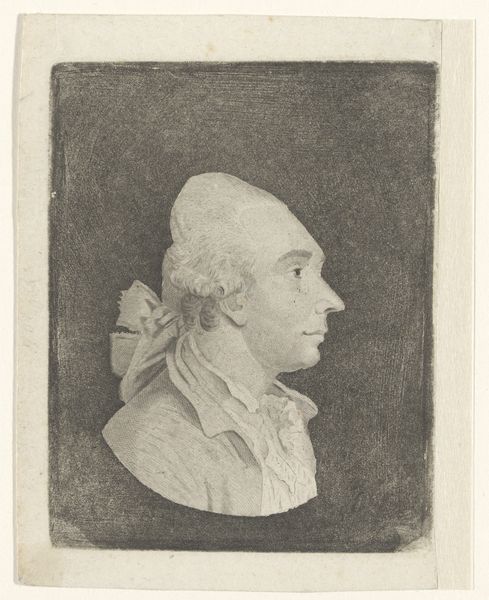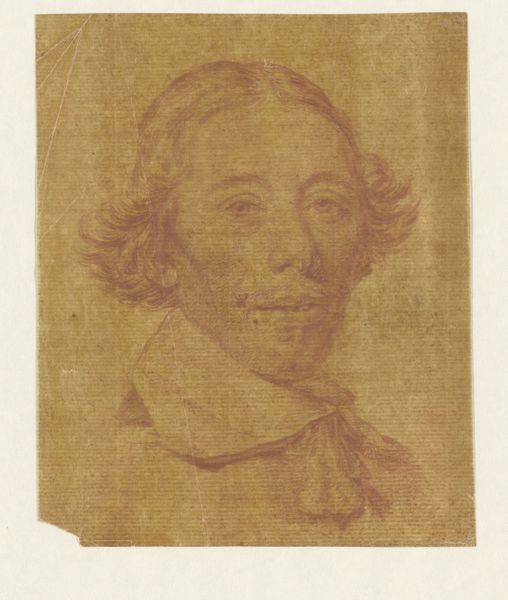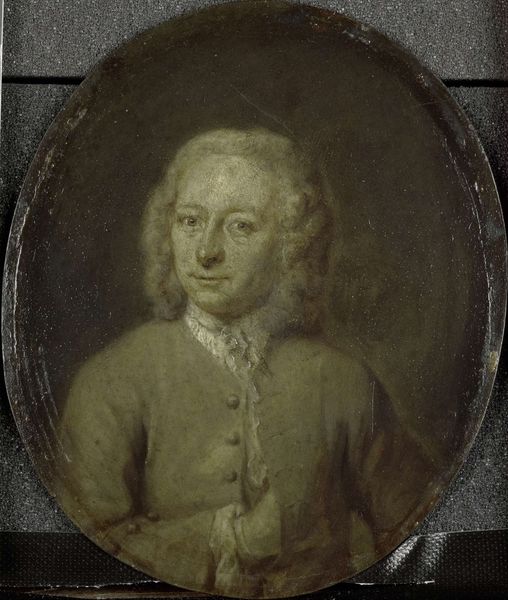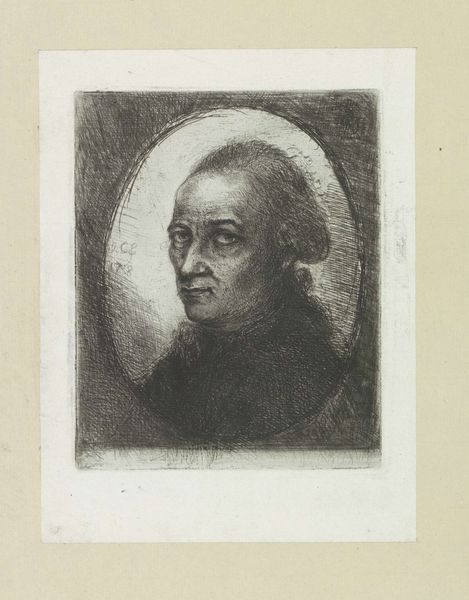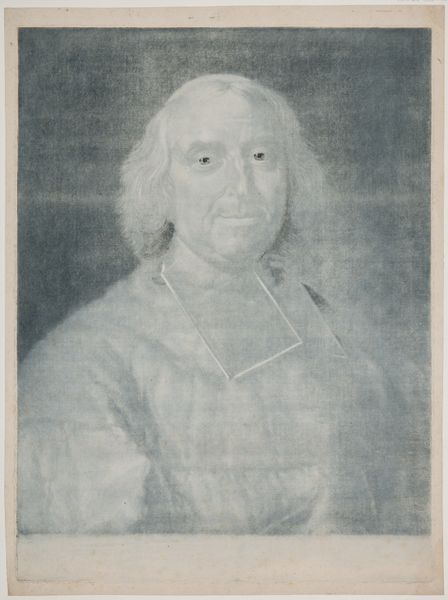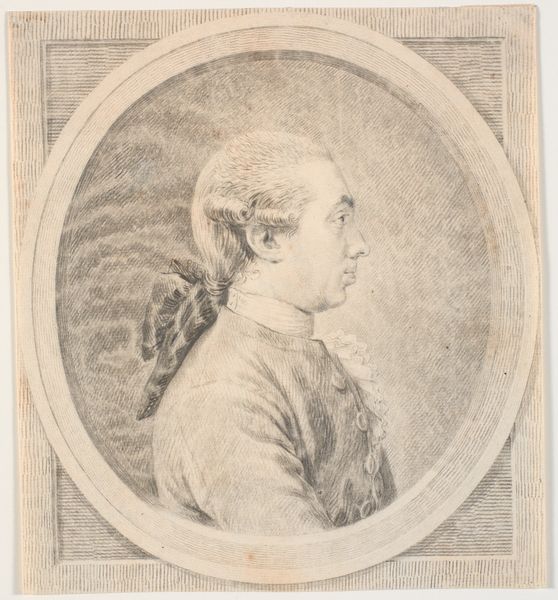
Dimensions: 5-7/8 x 5 in. (14.9 x 12.7 cm)
Copyright: Public Domain
Curator: Let's consider this portrait drawing by Francesco Bartolozzi. It depicts Richard Brocklesby, a physician, and was executed between 1764 and 1802. It’s made of charcoal on paper, a print. Editor: The somber hues and the subject's direct gaze create a strong, if subdued, presence. There is also something melancholy in his eyes. It makes me wonder about his story. Curator: Indeed. Bartolozzi's handling of light and shadow emphasizes the volume of Brocklesby's face. Notice the precise, almost scientific delineation of form – characteristic of Baroque portraiture, yet with a delicacy that prefigures Neoclassicism. Editor: The oval shape echoes the established portrait convention, doesn’t it? Oval forms historically evoke the symbol of the egg, life, or the cosmos. Considering that, perhaps the shape hints at the nurturing role Brocklesby plays as a physician. Curator: An intriguing interpretation! The symbolism complements the composition nicely. But speaking of structure, I’m compelled by the contrasting textures created solely through the charcoal medium – the soft rendering of skin against the sharper definition of the hair, for example. The oval, a clearly distinct pictorial element, frames this analysis quite neatly. Editor: Brocklesby was known to be an advocate of colonial independence during the American Revolution, which might explain something about the intent gaze; his expression may represent moral integrity at a time of conflict. And look, this oval might evoke the visual idea of a coin; are there some suggestions here regarding prosperity or perhaps contribution to society? Curator: Fascinating. And yet the drawing is fundamentally a collection of lines and tonal values arranged in a specific way, an attempt to represent the external and perhaps capture something of the internal. That such an interplay is still resonant over two centuries later, demonstrates Bartolozzi's accomplishment. Editor: Yes, and it's precisely the accumulation of such elements – of style, setting, and personal character – which allow the portrait to continue speaking volumes long after the sitter and artist have passed on. It carries both their individual stories and echoes of the time they inhabited.
Comments
No comments
Be the first to comment and join the conversation on the ultimate creative platform.
